textshow (3)
By:
September 25, 2018
Being the third in a quarterly series of passionate conversations from the cafeteria of pop-culture: textshow throws a variety of artistic observers into the arena of social media, to discuss movies, comics, TV and other artifacts of the collective media consciousness just waiting for some free association. Conducted in real-time, these threads are followed where they feel like, with the tangential revelations and composed spontaneity only this new media makes possible.

The further we travel into our future, the more we visit the past, and know we wouldn’t want to live there. History is a closed book with many open questions — we’re spending a lot of time re-reading it for the stories that went unwritten to begin with. Realities no one was told about (Hidden Figures), fantasies that ring true to the collective autobiography of outsiders (The Shape of Water); farces that show the absurd incongruity of evil and disprove pleasant mass amusement’s ability to buffer it (DC Comics’ reboot of Snagglepuss as a gay southern playwright hounded by HUAC), fairylands of contentment whose gleam bears the grime of jagged glass ceilings (The Marvelous Mrs. Maisel). America is fact-checking what was “great” the first time, and how to move from “again” to “next.”
I sat down to a multiplayer symposium with Maria Hoey (whose illustrations call back to Art Deco optimism with a melancholy sense of distance), Holly Interlandi (monster-movie pundit and author of the 1990s indie-rock memoir comic Last Song), and Aldo Perez (heir to guitar virtuosos of legend and performance-satirist of varied vintage icons and stereotypes), to hammer out how we turn to the future by facing the past…
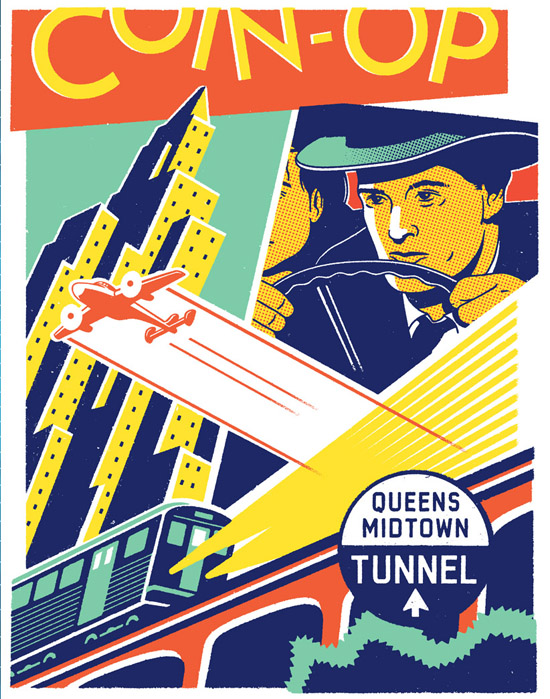
HILOBROW: Welcome artistic time-travelers! I’m at an unfair advantage since I had time to type out a few (lengthy) questions before we all logged in. These, however, may well go back out the window on the same brick they sailed in through as the conversation takes its own course, which is encouraged.
I can try and start out short though: Each of you casts a certain light on the present by taking a look into history. In these retro-chic, period-piece, culture-reassessing times, you’re not the only ones. How does this looking-back help you think and say something new? (I’ll sound less stilted as we go on :-))
HOEY: Maybe sometimes it’s an escape.
INTERLANDI: I have an easy answer. Well, not easy, exactly, but circumstantial. I wrote the first draft of Last Song almost twenty years ago, so it wasn’t “retro” then. …I am aging myself.
PEREZ: For me hearing a certain period of music evokes a purity that inspires me to strive for similar ideals.
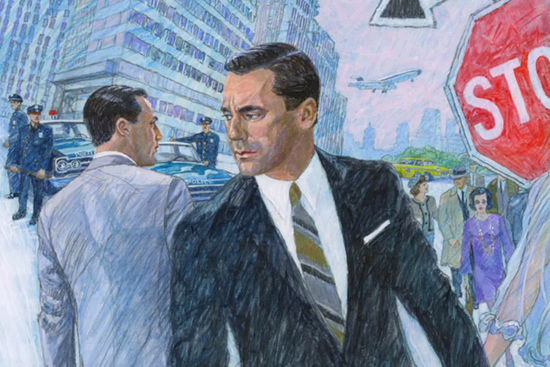
HILOBROW: But escape from what, @Maria? The brutalities of the present, or the present’s rosy lies about the past?
HOEY: It’s funny, I don’t really like “period pieces” on TV (I avoided Mad Men because it looked like a cheap way of looking back on the past), but they are also really good [at] being an indirect way of dealing with things in the present (or at least dealing with universal themes). I’m also in love with the golden age of cinema.
HILOBROW: @Aldo, how about when those ideals were narrow? You wring a lot of great comedy from time-displaced figures too… or is that about the theatrics rather than the music?
PEREZ: Yeah I evoke a made-up past that’s very inaccurate to be sure, and that can be funny, but underneath humanity can peak out from any era. A facial expression by Neanderthals as if to say “WTF “about something. So there’s a thread.

HILOBROW: @Holly, how did the narrative itself “age” — did your perspective and portrayal change even as the events themselves did not?
INTERLANDI: I mean, of course my perspective changed, as I was an angsty 19-year-old college student when I first tackled the story. But what’s been amazing is seeing the cultural landscape change so hugely since then.
HILOBROW: True @Holly — there have been shifts which make the pop-culture of the ’90s seem like more than 20 years ago…
INTERLANDI: When I first wrote it, “queer” was not really a thing. You were either gay or straight. Nobody talked about the in-between. So it felt a little revolutionary.
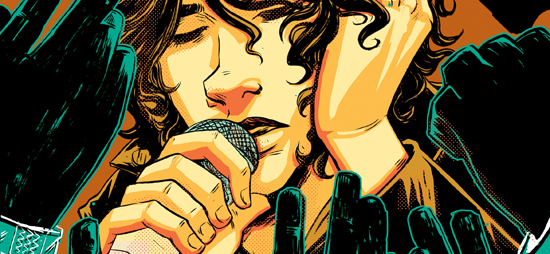
HILOBROW: @Maria, how do you see the golden age of cinema comparing with period pieces (if you’ve seen enough of the latter)? Sometimes the period pieces can be remedial while still having some of the same magic…
HOEY: Well I think one is made in real time (say Hitchcock) and the other (like say Mrs. Maisel) is just a paper moon sailing over a cardboard sky. It’s using a computer filter to simulate the film stock, it’s relying on wardrobe to simulate it (like a Civil War re-enactment — you know you’re not at the real thing).
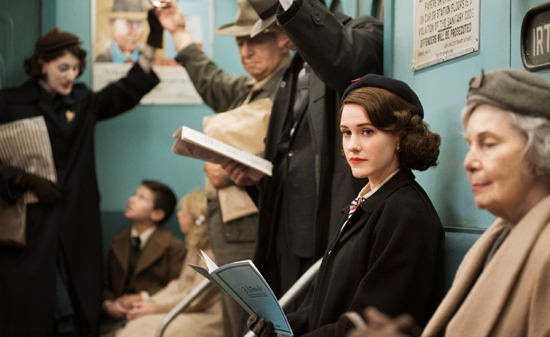
HILOBROW: @Aldo, your “made-up-past” thought prompts a general question: What do you all consider more difficult, truthfully picturing a world from before you existed, or honestly portraying a past from within your own lifetime?
INTERLANDI: When I write a story like this, I don’t consider my own position at all.
HILOBROW: @Holly that may explain how you achieve such a 360 voice…
PEREZ: It’s so hard to know if we remember accurately. It’s certainly fun to consider a real present in which we aren’t there. From whose poverty do we imagine? — POV not poverty
INTERLANDI: Hey, imagining poverty is also a thing!
PEREZ: yes!!
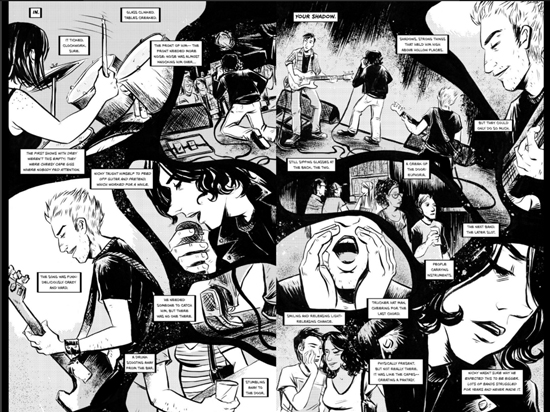
INTERLANDI: It’s funny, when I first showed people the drafts and stuff, they wanted to know which character I related to, or which one was “based on me.” And truthfully… none of them. If I had to put myself into the story, it would be as the cafe clerk from the very beginning/end watching Nicky sitting in a booth.
HILOBROW: So @Maria you found Mrs. Maisel to be unconvincing? Or maybe I should say unenlightening? To a lifetime simulation fan like me, those can be two different things.
HOEY: I think Maisel is condescending to the past. Tony Shaloub (sp) made me cringe (and yet as Primo… in Big Night… another period piece… he was fabulous). There is something cheap about Maisel that makes me feel taken advantage of when I’m watching it.
INTERLANDI: I’ve never seen Maisel, @Maria, but that feeling you described is a lot of why I avoid so much television.
HILOBROW: Well @Maria, Maisel is certainly speaking directly to the 2010s from the 1950s… almost all period-pieces (like almost all futuristic sci-fi) is really about the times it’s made *in*…
Could it be possible @Aldo to see the past from before our lives more clearly than those who firsthand remember it, like getting physical distance on an Andean earth-carving?
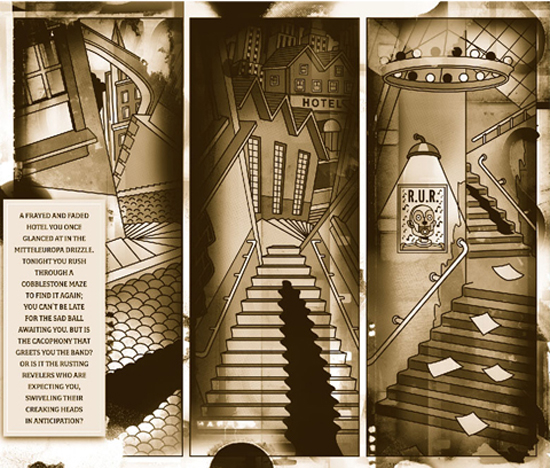
PEREZ: Both my parents survived wars, it was strange imagining what they dealt with as children. My father was hardened and did not do well. They put lots of pictures in my mind.
HOEY: My parents grew up in another era (the early Depression); their lives were always very black-and-white to me, and probably why the past doesn’t seem so much in the past.
INTERLANDI: Isn’t it weird how we always picture the past in black-and-white and sepia tones? Or at least I do.
PEREZ: Hmm. Yes.
HOEY: Always! …Until Kodachrome.
INTERLANDI: Almost as if our brain needs an indicator of what came “before.”
HILOBROW: That’s a brilliant way of putting it @Holly… I’ve long believed that time behaves in the same way for everyone’s childhood — no matter when you’re born, your baby and toddler and high-school pix look like they’re from 40 years ago 😊. I considered it a quantum sorting system… but the brain theory is probably truer, @Holly!
@Aldo and @Maria [your family history] is something many of us here seem to share — my folks were from 1924 and ’34 so it feels like my mind’s lifespan.

INTERLANDI: Wow, does that make me the spring chicken? My parents were born in ’50 and ’52. They had pretty cliché baby boomer immigrant existences 😉.
HOEY: Yup — the music and references (and the poverty) was unrelatable by my friends who were raised by baby boomers. They had Meatloaf 8-tracks in their house. We had musicals.
INTERLANDI: We had Meatloaf AND musicals!
PEREZ: Nice! I love that first album.
HOEY: It is good.
PEREZ: I’m obsessed with these certain recordings of Billie Holiday and Lester Young et al. from ’37-39. There’s something in the zeitgeist (sorry Hegel).
HILOBROW: How is it that some things sound more relevant out of their times? @Aldo, Billie Holiday has been more popular since I was in college in the late ’80s than she had been for a few decades before.
INTERLANDI: It’s the hipster phenomenon, sometimes. It’s only cool if you retroactively discovered it.
HILOBROW: The buried-treasure effect does play a significant role @Holly, you’re right.
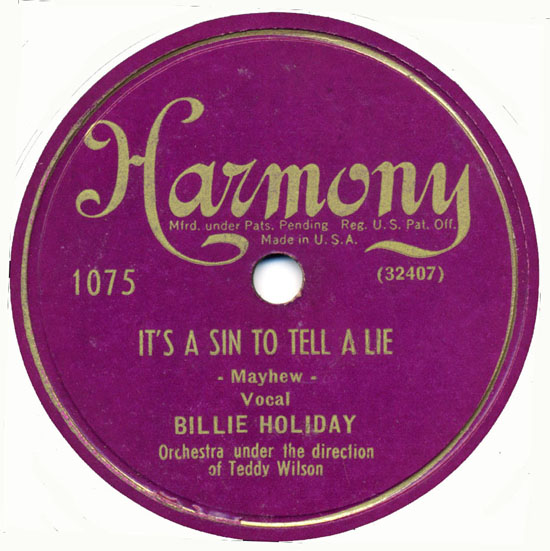
PEREZ: Yeah, things jump around, her story is complex but the sound these people were making based on visceral connections to current and cutting culture is why it endures. It kicks ass in a historical way. And [it’s] impossible to reproduce without becoming one of those types of fully committed artists.
HILOBROW: I agree @Aldo, I’ve always thought that if something was intensely true to the time it was made in, it will strike a chord with anyone else’s deeply-felt, clearly-seen time…
INTERLANDI: And hey, I’m guilty. I’m obsessed with the punk band Death and totally pissed I wasn’t alive to appreciate them.
PEREZ: I have seen death, but not the band.
HILOBROW: Yeah, death is practically my neighbor, @Aldo…
HOEY: Like youth I see wearing DEVO shirts (or Sade concert shirts); nostalgia.
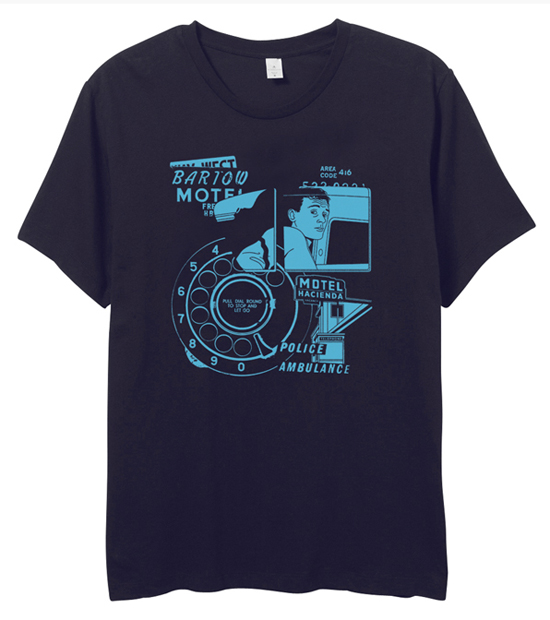
INTERLANDI: Am I allowed to pause and go pee?
PEREZ: Please do!
HILOBROW: Pee like you might die tomorrow!
HOEY: …or yesterday (nostalgia).
HILOBROW: …or wait, was that just a riff on being “totally pissed” you didn’t see Death? 😊
PEREZ: Live every day as if it’s your last and some day you’ll be right.
HILOBROW: @Maria and @Aldo, you’re both on fire! (And I’d never pee to put it out.)
HOEY: lol
PEREZ: Are our bodies just something that happens to us?
HILOBROW: The vessel at best — I hope so. “Is evil just something you are? Or something you do?” — Morrissey (my nostalgic-T-shirt offering). But seriously that is brilliant @Aldo.
PEREZ: Oh, according to Epictetus, we should always be in a state where we know we are saying a possible goodbye.
HOEY: Long live Morrissey, if you are cool you can get away with anything.
INTERLANDI: Or in Morrissey’s case, being completely uncool is considered cool. (Hello, I am back.) I find it interesting that we always use musicians to illustrate our points.
PEREZ: That is revealing!
HOEY: Music pops up in a lot of stuff I do too 😊.
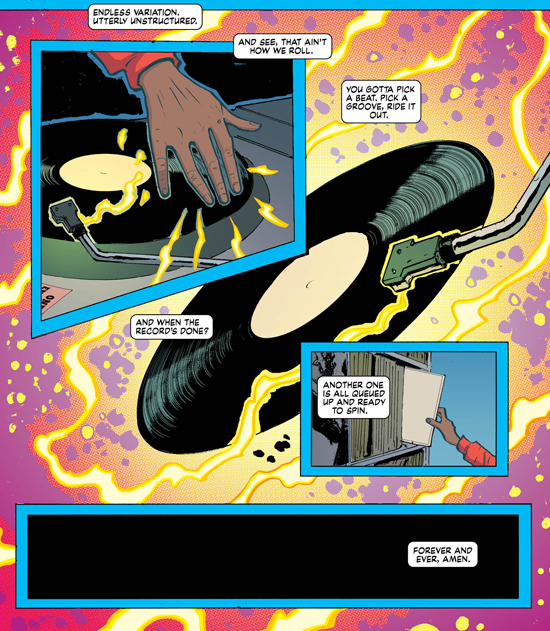
HILOBROW: See also: my recent interview with Mags Visaggio, in which she posits that the individual is just a “wave function,” a pattern that absorbs and sheds matter, like the way an actual wave moves through the ocean but the ocean stays stationary. …which sounds like a line from Bowie’s “Changes,” so, there’s yer musician metaphor again!
INTERLANDI: I love Mags. She’s my publishing buddy. Although she writes about kick-ass science fiction women and is far more successful for it. Whiny queer rockstars don’t have quite the same appeal 😉.
HILOBROW: That is FINE whine, @Holly!
PEREZ: For one thing, simple advances in technology made stuff like electric guitars and amps a reality. Billie Holiday started bar singing before they had microphones!
HILOBROW: @Aldo, does any of this influence travel both up and down the timeline, like a tachyon? That is, Billie Holliday anticipates things and moves forward with them to meet up with when they’re in this world?
PEREZ: We’re all connected in an endless fluid timeline… when I take solos, I’m referencing anything I’ve heard or seen. Cartoons, weird shit, all the great music, movies jokes books.
HILOBROW: That synesthesia is so crucial I think, @Aldo… especially in our current environment, where info-stimulus literally surrounds us, and we have 360-degree access to the past.
PEREZ: Yeah, it’s what makes us special now. If you’re alive, your part of the now, I guess.
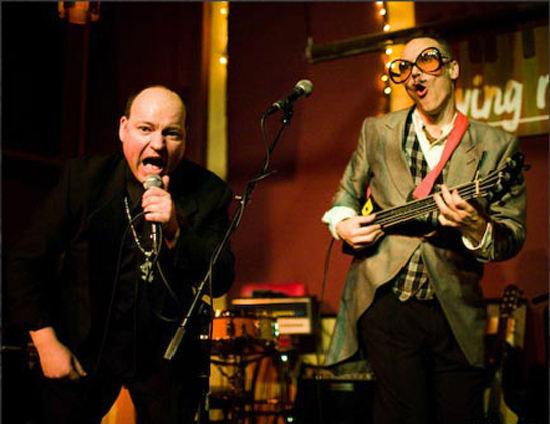
INTERLANDI: I love this idea of perceiving the future. It’s very Bowie-esque; Velvet Goldmine is my favorite movie.
HILOBROW: Going back like a tachyon to the point about DEVO t-shirts… @Maria I think that may be a bit different — it’s *supposed* to be a relic… here in Late Capitalism we also seem to have nostalgia in advance. Settings like the future ruins of Blade Runner 2049 give an oddly wistful feel of desolation. What is the romance of decay? Is it the relief of outliving some imagined future? Or the reassurance of structures that last, and show how many years they have?
HOEY: I think it’s hard (for me) to have time travel without nostalgia.
HILOBROW: I guess you’re right @Maria, travelling back *or* forward has its sense of loss, of leaving…
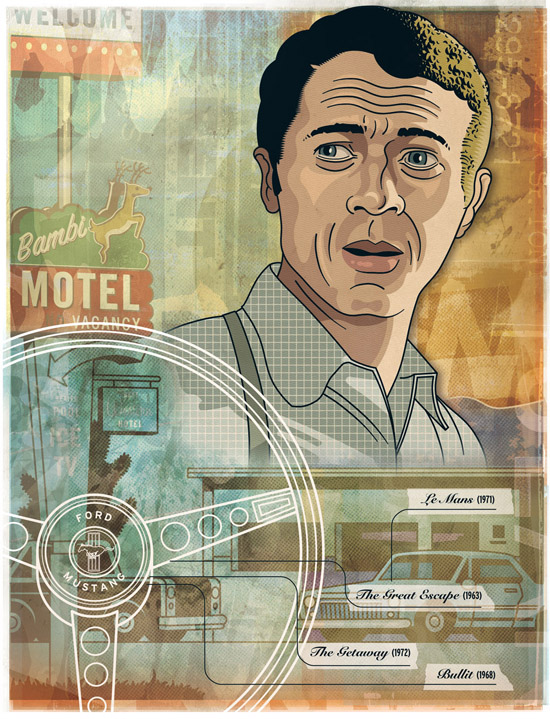
INTERLANDI: I think a lot of post-apocalyptic settings are weirdly narcissistic of human beings. Like, everything is destroyed, and yet somehow some stud in leather and chains is still alive? OK Petra.
HOEY: That’s pretty interesting Holly I agree!
HILOBROW: Lol @Holly! Sting even once said that about his own “When the World Is Running Down”…
PEREZ: I always marvel at how good so many performers were back in the ’30s, ’40s, ’50s. They could play circles around many of us today. Also the ’70s kicked some ass!
HILOBROW: @Aldo, where does it cut off? (Trick question; I think you yourself are proof that it hasn’t…)
PEREZ: No it’s always going, it’s just [that] our current culture doesn’t need tap dancers, and big band or bop players. I know world-class players that don’t have gigs. And that’s in NYC. But we chase what we love.
HOEY: “Chase what we love” should be the title of our talk 😊.
HILOBROW: Well said @Aldo — do you think the anomaly of the old can feed the novelty that the current day craves?
PEREZ: If you can play the shit for real, people listen.
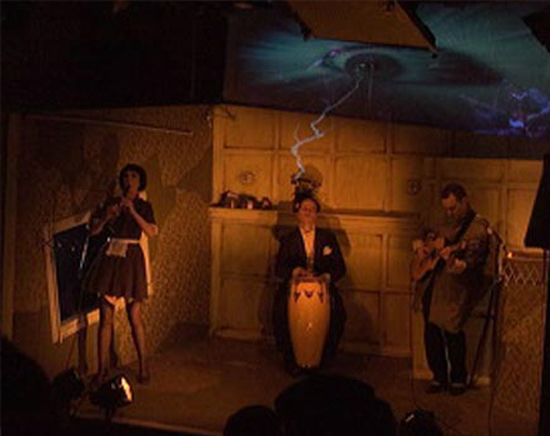
HILOBROW: What feelings do *your* travels in your illustrations give you, @Maria? Typically they’re addressing current subjects in vintage visual vocabularies…
HOEY: It’s funny Adam they just feel right to me (but not vintage) although I know people see it that way. I’m shooting for timeless 😊.
PEREZ: What I mean, is create real music in the moment using whatever idiom, it will be perceived as current.
HILOBROW: Amen. p.s. @Holly your comment about Death I think is kindred to @Aldo’s ideas of sincere reclamation, not just fashionable necrophilia 😊.
INTERLANDI: Music is unique in that sense that there is a “live” aspect.
PEREZ: Yes, that’s an advantage, to be able to inhabit a current moment.
INTERLANDI: I mean, I could write “live,” but I don’t think it would be particularly riveting. Sports commentary: “And now she’s changing pens… no wait! A twist! It’s a pencil!”
PEREZ: Wow! That’s a JAZZ idea!
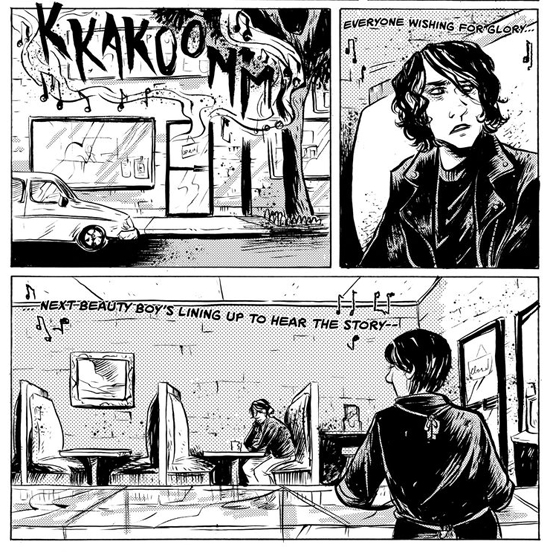
HILOBROW: @Aldo, it’s like when Angelique Kidjo points out that culture has never been “pure,” there have always been crosscurrents. And it seems to me you’re saying that (to paraphrase Dickens), music being played now is new music.
INTERLANDI: Does anyone actually claim that culture was ever “pure”? I mean… the very term “culture” is derived from bacterial growth.
HILOBROW: “Purity” is the construct where minds frightened of open-ended learning go to hide…
PEREZ: It’s like when you travel, isn’t it? When you pass different realities. It’s all a soup from a distance. From an airplane, cities look like lichens.
HILOBROW: Though, each time I read a new book, comic, etc., @Holly, it’s happening live to me… and I like the notion that every recorded work of art is “happening,” continually, in its own square on the timeline. Like at the end of Alan Moore’s Tom Strong, where Saveen says our lives are a book that we can keep reading over and over, alive and after (presumably with new meanings being gleaned…)
INTERLANDI: Absolutely, when you read a book it feels “live” as you read, even if it was written 500 years ago. Which brings up an interesting point about the nature of art — that the consumer/reader keeps it “live.”
PEREZ: That’s very true… to them it’s unfolding!
HOEY: Yup and brings it back to life when it’s rediscovered.
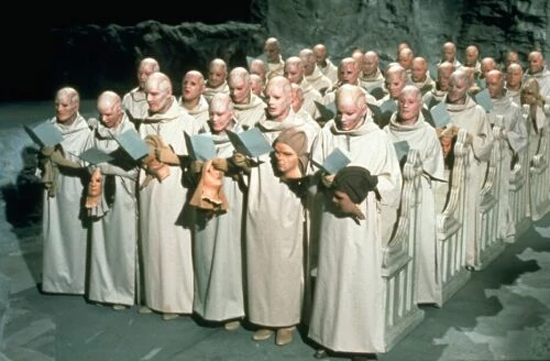
HILOBROW: Which relates to your thought about your hybrid work feeling current to you, @Maria. When I was 8-ish and my parents took me to see Beneath the Planet of the Apes and Earth blows up at the end, I said to my folks, “It’s okay, because Zira and Cornelius are still alive in the past” — weird that I was picturing time spatially even then…
PEREZ: Those movies fucked me up! Especially the music when they were worshiping the bomb!! But I loved them.
HILOBROW: One of the only moments in all of culture that truly terrifies me is that off-key hymn-singing by those mutants. TO THIS DAY.
HOEY: Children’s minds are best. Wonderfully silly and serious, at the same time trying to make connections with the knowledge they have.
INTERLANDI: Oh man. I hate kids.
Sorry. /conversation derailed
HOEY: Lol I don’t have them.
INTERLANDI: I think my brain needed a good conviction after all this speculation.
PEREZ: haha!
INTERLANDI: That’s really interesting @Adam because I feel like most of the time it’s in our nature to perceive history as stories. So if you stop the story at the right part, it’s always a good ending.
HILOBROW: True @Holly — the human need to order experience and impute meaning is axiomatically strong in storytelling — though I disagree with parts of the axiom; i.e., that this is an inauthentic and self-deceiving impulse; I think it’s an extra dimension of how we interact with a quantum environment that’s very “real” but also malleable…
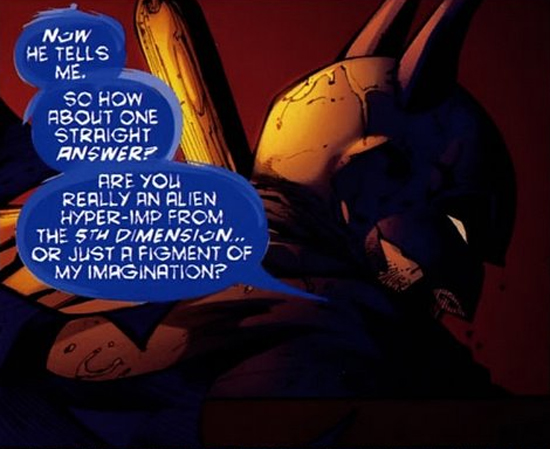
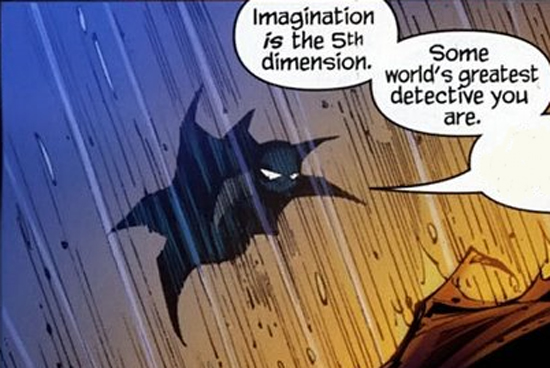
PEREZ: It’s just that we’re prone to believe without facts, as a species.
HILOBROW: That’s why they call it “believe”
INTERLANDI: Nothing about stories is inauthentic. Even the fictional ones.
HILOBROW: Agreed — story is humans’ interface with higher knowledge.
Also: proudly kid-less over here! 😊
INTERLANDI: I have a dog. He is my kid.
HOEY: I have a dog too.
HILOBROW: I’d like a literal goat. But, topic-drift, sorry…. 😊
INTERLANDI: oooh is this where we swap dog pics
HOEY:

INTERLANDI: Aw, the cone of shame!
HOEY: He’s rocking a cone and riding a tramadol wave.
PEREZ: Good boy!!!!
HOEY: (toe amputation) now has chicken foot
HILOBROW: And now he’s just been made A STAR
HOEY: 😊
INTERLANDI: It’s so funny because I am such a dog person and yet my artist Sally has cats, so she draws cats into every panel.
PEREZ: Pets make me love humanity. It’s one of the best parts.
INTERLANDI:

HOEY: Gorg-eous
PEREZ: 😱
INTERLANDI: He has a piece of bone stuck to his nose but he’s blissfully happy.
PEREZ: What a face!
INTERLANDI: I’ve never written anything about dogs. Which is weird because I adore dogs. Maybe they’re my sense of what “pure” is.
PEREZ: Yes! I agree! Full circle.
HILOBROW: You guys all deal in disjunction (characters, eras, styles, formats), but it comes together harmoniously — and of course the tumult of available influences is wider than ever. Is the ability to scramble vital to the way artists can now make sense?
Also:
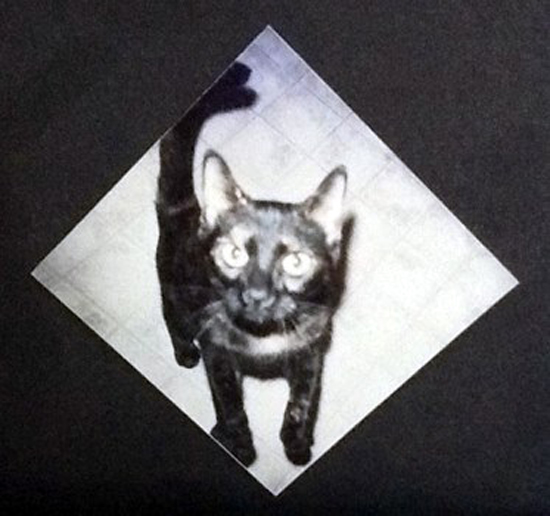
Animals are the un-ulterior beings on this planet.
INTERLANDI: Funny that you call it scrambling… I think it’s necessary to a postmodern sensibility that understands how many points of view exist (love your cat)…
HILOBROW: She was my fuzzy daughter.
INTERLANDI: …one of my favorite novels is William Faulkner’s The Sound and the Fury — 4 parts, 4 different points of view, to tell a complete story. In this age of deconstruction I think it’s one of the only ways to elicit real emotion.
HILOBROW: Well said @Holly — I use “scrambling” as a compliment — salvaged from a more linear era’s insults 😊.
INTERLANDI: We’re very much past the “hero story arc” being affecting.
HILOBROW: Less the hero arc and more the community circle.
INTERLANDI: AND, the hero is always a villain in someone else’s story.
PEREZ: Or both simultaneously. A soup.
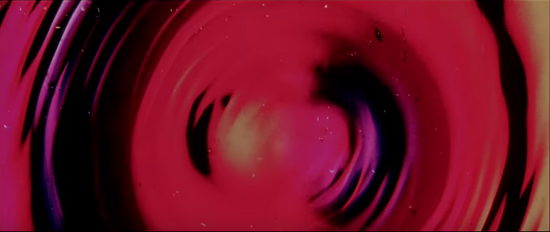
HOEY: I think things come together harmoniously when you believe in the small world you are making.
PEREZ: Agreed!
HILOBROW: Great phrasing @Maria!
INTERLANDI: So the soup reaches as many people as possible, really.
HILOBROW: The soup is a concept built around a forgotten nail it then transcends — and everyone can stir. Great thoughts — and pets — everyone!
INTERLANDI: I love that we managed to shoehorn pictures of our pets into a philosophical discussion about the art of the past. That may have been my fault.
HILOBROW: The internet survives on kittens.
Images, top to bottom: Print, Peter & Maria Hoey; Mad Men Season 6 promo (Brian Sanders); Renaldo The Ensemble; Last Song image (Sally Cantirino); Marvelous Mrs. Maisel still; Last Song spread (Sally Cantirino); Detail, “Valse Mecanique” (Peter & Maria Hoey); vintage cookbook cover; Billie Holliday label; Stan Getz Motel t-shirt (Peter & Maria Hoey); detail, Eternity Girl (Sonny Liew); Renaldo The Ensemble live (photo: Bernie DeChant); Steve McQueen (Peter & Maria Hoey); The Curse of the Mystic (Theatre The); Last Song detail (Sally Cantirino); Beneath the Planet of the Apes; two details, Batman #680 (2008); Maria’s dog; Holly’s dog; Adam’s cat; 1970s movie-theatre prologue (excerpt).
textshow logo designed by Steve Price
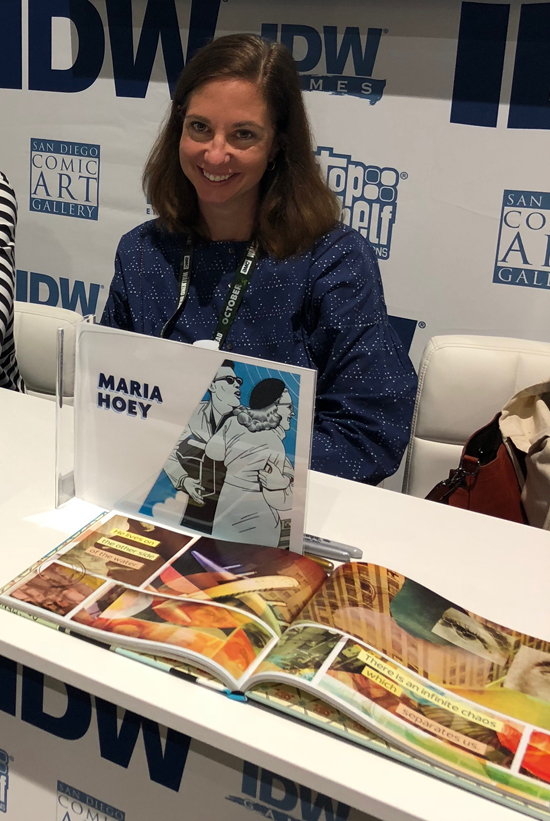
Maria Hoey, along with her brother Peter, creates Coin-Op Comics. A hardcover collection of their work, Coin-Op Comics Anthology 1997-2017, was published this summer by Top Shelf Productions. Maria lives with her husband in Brooklyn, NY.

Holly Interlandi is the creator of LAST SONG., currently in quarterly release by Black Mask Studios. A disciple of good storytelling in whatever medium, she is also editor of Famous Monsters magazine and the author of LOUNGE TALES, a short story collection available as an e-book. She has the best dog in the world.
https://hollyinterlandi.com/

Aldo Perez: Guitarist, grieving father and person.
MORE COMICS-RELATED SERIES: Douglas Wolk’s LIMERICKANIA | KIRB YOUR ENTHUSIASM — 25 writers on 25 Jack Kirby panels | ANNOTATED GIF — Kerry Callen brings comic book covers to life | COMICALLY VINTAGE — that’s-what-she-said vintage comic panels | DC — THE NEW 52 — an 11-year-old reviews DC’s new lineup | SECRET PANEL — Silver Age comics’ double entendres | SKRULLICISM — they lurk among us | Douglas Wolk’s THAT’S GREAT MARVEL, TAKING LIBERTIES, STERANKOISMS, MARVEL vs. MUSEUM, LIMERICKANIA, WTC WTF
MORE POSTS by ADAM McGOVERN: OFF-TOPIC (2019–2025 monthly) | textshow (2018 quarterly) | PANEL ZERO (comics-related Q&As, 2018 monthly) | THIS: (2016–2017 weekly) | PEOPLE YOU MEET IN HELL, a 5-part series about characters in McGovern’s and Paolo Leandri’s comic Nightworld | Two IDORU JONES comics by McGovern and Paolo Leandri | BOWIEOLOGY: Celebrating 50 years of Bowie | ODD ABSURDUM: How Felix invented the 21st century self | CROM YOUR ENTHUSIASM: C.L. Moore’s JIREL OF JOIRY stories | KERN YOUR ENTHUSIASM: Data 70 | HERC YOUR ENTHUSIASM: “Freedom” | KIRK YOUR ENTHUSIASM: Captain Camelot | KIRB YOUR ENTHUSIASM: Full Fathom Five | A 5-part series on Jack Kirby’s Fourth World mythos | Reviews of Annie Nocenti’s comics Katana, Catwoman, Klarion, and Green Arrow | The curated series FANCHILD | To see all of Adam’s posts, including HiLo Hero items on Lilli Carré, Judy Garland, Wally Wood, and others: CLICK HERE
